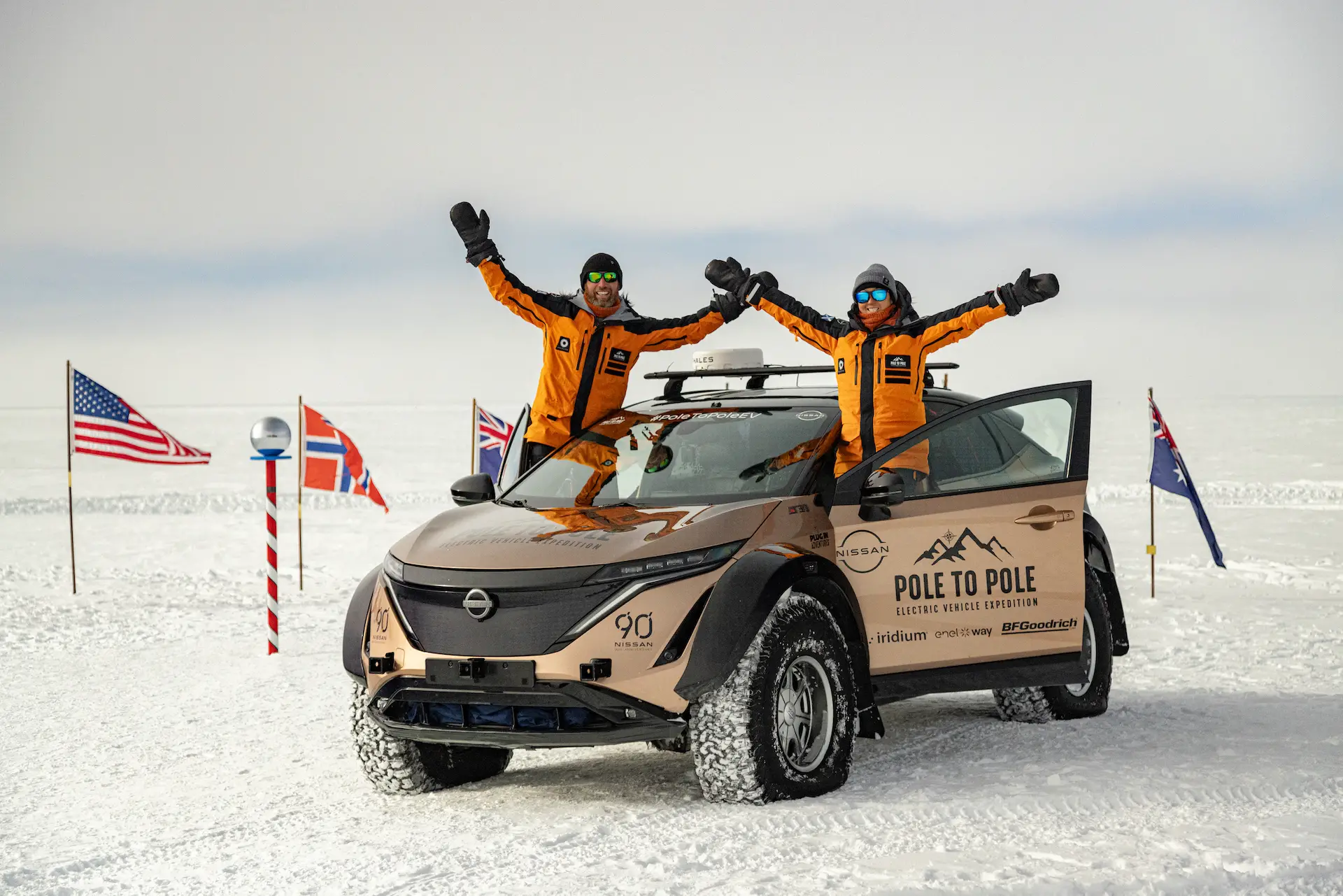Nissan Aiya successfully drives from North Pole to South Pole
Only different tires
Nothing was changed about the Nissan Ariya’s electric motors and battery for this trip. The Nissan was modified, however, to accommodate the special wheels with 39-inch BF Goodrich tires needed to drive over snow, ice and sand. It also has an air pumping system to let air out of the inch tires or just to re-inflate them. The wheel arches have also been widened. As a self-proclaimed coffee lover, Chris had access to a specially integrated espresso machine with a hefty supply of sustainable coffee. Of course, the inner man must also be fortified.
Leaden journey for Nissan Ariya
In March 2023, the expedition started at the magnetic North Pole. Significant was the postponement of the start due to very bad weather. Through the Arctic, Canada and the west coast of the United States, the duo drove to Central America. Snow gave way to mountains and mountains became deserts. Through Peru, Chile and Argentina, among others, the southern tip of South America was reached. After being transported to Antarctica, the final leg of the leaden journey began, under icy, arctic conditions Chris and Julie completed the final leg of their journey.
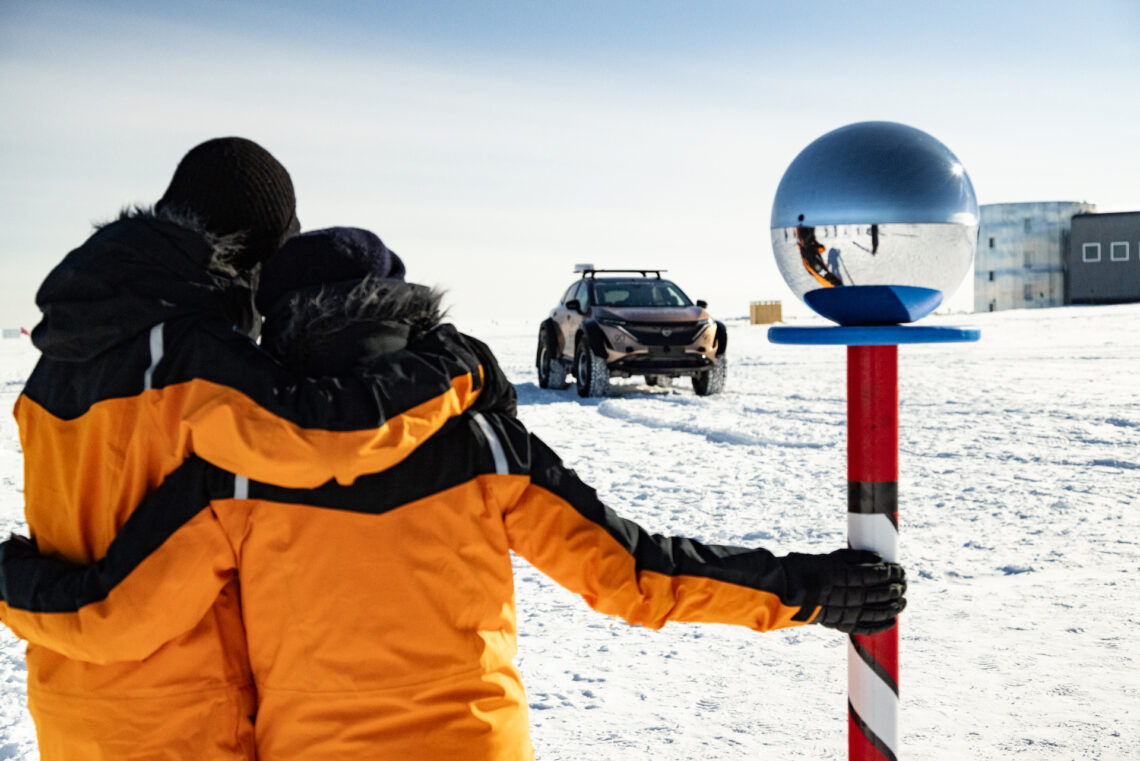
Heavier than expected
Chris Ramsey looks back on the epic electric expedition: “Actually, it is hard to fathom that we are actually standing here now. For years we prepared this, together with enthusiastic partners. We never doubted that this trip with the Nissan Ariya would succeed, but it was much tougher than we expected. We are proud that the story of our expedition has reached millions of people around the world.”
Julie adds, “This was an incredible trip! Thanks to the people we met, thanks to the friends we made and thanks to the help we got everywhere. This trip is not just Chris and I’s, but all the thousands of people we met on our journey who helped us because they want to encourage electric driving.”
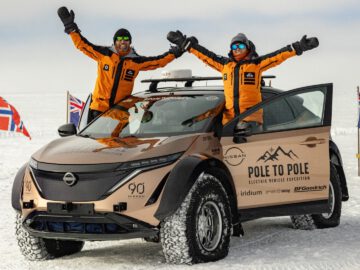
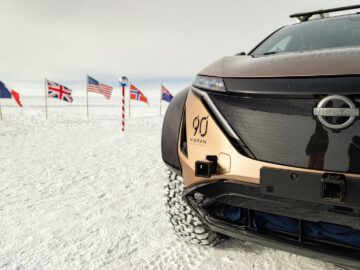
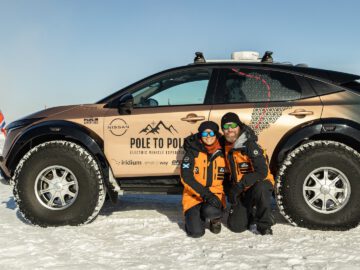
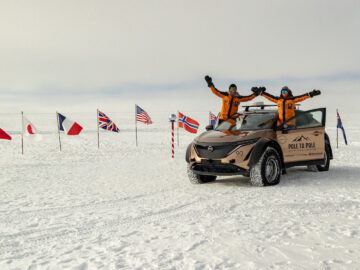

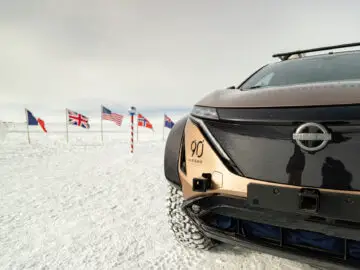
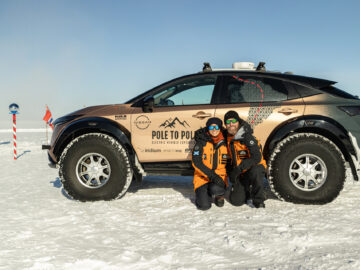
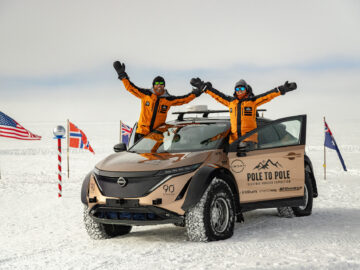
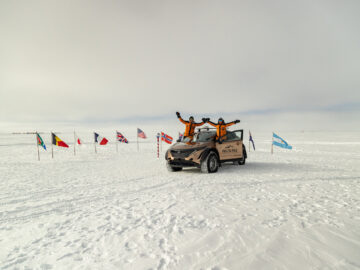
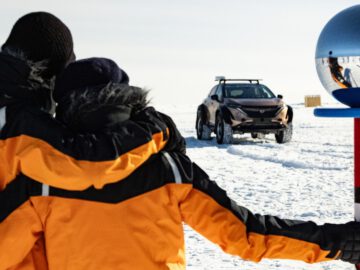
How did charging go?
Thanks to a portable renewable energy unit, it was possible to charge the Ariya in the polar regions. The towable prototype includes a compact, lightweight wind turbine and solar panels that take advantage of strong winds and long hours of daylight to charge the electric car’s battery when Chris and Julie stop to rest.
Initial plans for special expedition
The adventurous couple started initial plans for the expedition in 2017. They had just driven the 10,000-kilometer Mongol Rally in an equally electric Nissan, the Leaf. During that trip, it became clear that epic expeditions contribute enormously to interest in electric cars. With the expedition from the North Pole to the South Pole, they proved once again that electric cars can go anywhere. In all, they rode through 14 countries.

